O que são baterias de rack de servidor?
Se você está pesquisando o armazenamento moderno de energia, especialmente para energia solar ou de backup, você provavelmente já se deparou com o termo "bateria de rack de servidor"." O que exatamente eles são, e por que se tornaram um padrão profissional para a construção de sistemas de energia confiáveis e escaláveis?
Uma bateria de rack de servidor é uma bateria de lítio de alto desempenho, normalmente usando o LFP de 48V seguro e duradouro (Fosfato de Ferro Lítio) química, construído em um formato largo padronizado de 19 polegadas. Este design permite que os módulos de bateria sejam instalados de forma organizada e segura ("torturado") em um gabinete de servidor. Eles são os blocos de construção modulares de uma economia de espaço, organizado, e sistema de armazenamento de energia de bateria facilmente expansível (BESS).
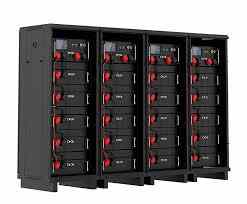
No GYCX Solar, nosso 48V bateria de montagem em rack soluções estão no centro dos sistemas de energia avançados que projetamos. Eles fornecem aos nossos clientes na Coreia do Sul e em outros lugares uma poderosa, flexível, e uma base preparada para o futuro para a sua independência energética. Vamos responder algumas das perguntas mais comuns sobre a construção de um sistema com essas baterias.
Como conectar 4 baterias para obter 48V?
Uma maneira comum de construir um banco de baterias de 48 V no passado era usar baterias menores, baterias mais comuns. Como isso é feito, e como ele se compara ao uso de um moderno módulo de bateria de rack de 48 V?
Para criar um sistema de 48 V a partir de quatro baterias individuais, você deve usar quatro baterias idênticas de 12V e conectá-los eletricamente em série. Isso significa conectá-los em uma corrente: o positivo (+) terminal da primeira bateria se conecta ao negativo (-) do segundo, o positivo (+) do segundo se conecta ao negativo (-) do terceiro, e assim por diante. A tensão total nos terminais abertos restantes será de 48V.
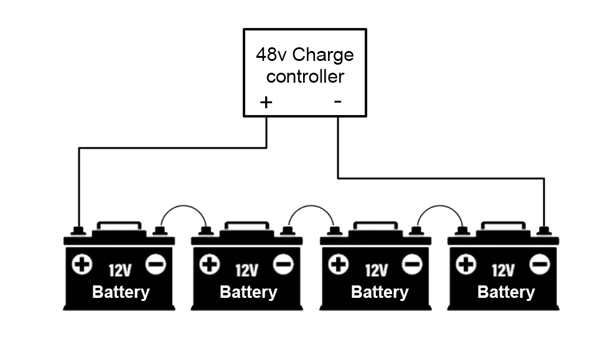
Mergulhe mais fundo: Fiação em série e a solução moderna
Conectar baterias em série requer atenção cuidadosa aos detalhes:
- O "Idêntico" Regra: Esta é a parte mais crítica. Ao conectar em série, todas as quatro baterias de 12V deve ser idêntico em química (Por exemplo, todos LFP ou todos AGM), ampere-hora (Ah) capacidade, marca, e, idealmente, idade e lote de fabricação. O uso de baterias incompatíveis causará desequilíbrios graves, levando a um mau desempenho, falha prematura das baterias mais fracas, e riscos potenciais à segurança.
- O caminho da fiação: Você cria um único caminho para a corrente fluir através de todas as baterias. A saída final de 48 V é obtida do terminal positivo principal da primeira bateria da cadeia e do terminal negativo principal da última bateria.
- A vantagem moderna: É aqui que um moderno 48V bateria de montagem em rack módulo mostra seu valor. Um único de nossos módulos é já uma unidade pré-projetada de 48V.
- Simplicidade: Você não precisa se preocupar com fiação em série complexa ou com o risco de células incompatíveis.
- Segurança: Cada módulo de 48 V contém seu próprio sistema avançado de gerenciamento de bateria (BMS) que equilibra perfeitamente todas as células internas, uma tarefa que é muito mais difícil em uma série DIY de baterias de 12V.
- Escalabilidade: Para aumentar sua capacidade energética, você simplesmente adiciona outro módulo de 48V em paralelo, que é uma conexão muito mais segura e simples.
Enquanto você pode faça um banco de 48V com quatro baterias de 12V, usar módulos de 48 V especialmente desenvolvidos é o mais seguro, mais simples, e abordagem mais profissional.
Quanto tempo vai um 48 bateria volt 100Ah por último?
Uma bateria de 48V 100Ah é um tamanho muito popular para armazenamento solar residencial. É uma quantidade substancial de energia, mas por quanto tempo ele pode realmente alimentar sua casa? A resposta depende inteiramente do seu consumo de eletricidade.
A 48Bateria V 100Ah lojas 4,800 watt-hora (O que) ou 4.8 quilowatt-hora (kWh) de energia. Quanto tempo vai durar é calculado dividindo essa energia total pela sua carga elétrica (em watts). Por exemplo, poderia alimentar um contínuo 480-carga em watts por cerca de 10 horas, ou um isqueiro 200-carga em watts por cerca de 24 horas.
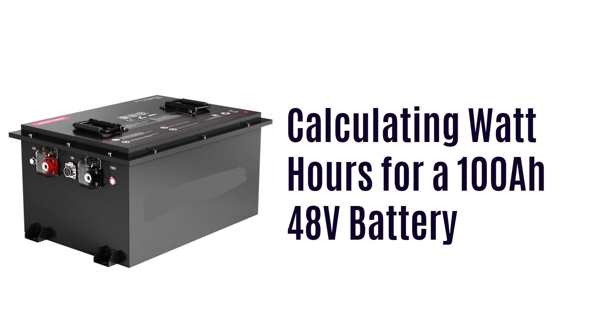
Mergulhe mais fundo: Calculando seu tempo de execução
Vamos examinar a matemática simples:
Etapa 1: Encontre a energia total em Watt-hora (O que)
- Fórmula:
Energy (Wh) = Voltage (V) x Capacity (Ah) - Cálculo:
48V x 100Ah = 4,800 Wh(ou 4.8 kWh)
Etapa 2: Calcule o tempo de execução com base na sua carga
- Fórmula:
Runtime (Hours) = Total Energy (Wh) / Load (Watts)
Exemplos de cenários para uma família coreana:
- Cargas Essenciais (aprox. 300C): Digamos que durante uma interrupção, você está operando sua geladeira de alta eficiência, Algumas luzes LED, Seu roteador de Internet, e carregando seus telefones.
4,800 Wh / 300 W = 16 hours
- Cargas moderadas (aprox. 800C): Você adiciona uma TV e um computador desktop ao essencial.
4,800 Wh / 800 W = 6 hours
- Carga Pesada (aprox. 2,000C): Você decide usar um ar condicionado portátil ou um aparelho de alta potência.
4,800 Wh / 2,000 W = 2.4 hours
É por isso que nosso Gycx Solar 48V bateria de montagem em rack os sistemas são modulares. Um 100Ah (4.8kWh) módulo é um ótimo ponto de partida, mas se você precisar de mais tempo de execução, podemos facilmente adicionar um segundo ou terceiro módulo em paralelo para duplicar ou triplicar sua capacidade.
Quantos painéis solares você precisa para uma bateria de 48V?
Você tem o seu 48V bateria sistema; agora você precisa carregá-lo com energia solar. Como você dimensiona seu painel solar para garantir que suas baterias sejam carregadas de forma eficaz todos os dias?
O número de painéis solares necessários depende da capacidade da sua bateria, o clima da sua localização, e a potência dos painéis. Para recarregar de forma confiável a 48Em 100ah (4.8 kWh) bateria diariamente em um clima como o da Coreia do Sul, com suas estações distintas, você geralmente precisaria de um painel solar de aproximadamente 1.5 kW para 2.5 kW. Isto se traduz em cerca 4 para 6 moderno, painéis solares de 400 W de alta eficiência.
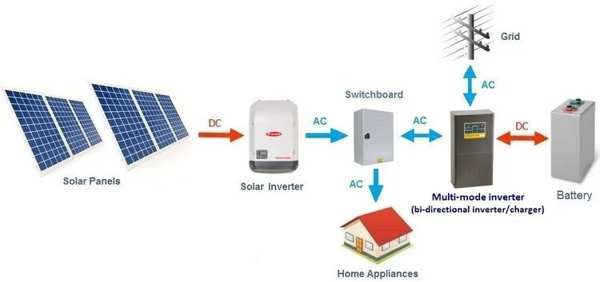
Mergulhe mais fundo: Dimensionamento para um clima de quatro estações
Veja como abordamos o dimensionamento de um painel solar na Gycx Solar:
- Energia para reabastecer: Precisamos repor a energia que você usa diariamente. Para um 4.8 Bateria kWh usando 90% da sua capacidade, É sobre isso 4.3 kWh.
- Horário de pico do sol (PSH): Esta é a variável chave. Na Coreia do Sul, isso muda com as estações. Você pode conseguir 4.5-5 PSH no verão, mas apenas 2.5-3 PSH no inverno. Geralmente dimensionamos a matriz com base em uma média anual ou em um valor de primavera/outono (Por exemplo, 3.5 - 4 PSH) para garantir uma cobrança adequada durante a maior parte do ano.
- Perdas do sistema: Contabilizamos a energia perdida com o calor do painel, fiação, e eficiência do controlador de inversor/carga (normalmente um 15-25% fator de perda).
- O cálculo:
- Energia solar necessária (kW) = Energia diária necessária (kWh) / (Horário do sol do pico x fator de eficiência)
- Exemplo (baseado em um conservador 3.5 PSH):
4.3 kWh / (3.5 hours x 0.80 efficiency) = 1.54 kW (1540 Watts) - Isso significaria
1540W / 400W per panel ≈ 4 panels. Para estar seguro e garantir um bom carregamento mesmo em dias menos que perfeitos, podemos recomendar 5 ou 6 painéis.
História solar Gycx: "Um cliente em Seul estava preocupado com o carregamento de inverno do seu sistema de bateria de 48 V. Projetamos sua matriz com base nos dados de horas solares de inverno mais baixas, garantindo que mesmo em um dia claro de inverno, suas baterias receberiam uma carga significativa. É este tipo de planeamento específico para o clima que torna um sistema fiável durante todo o ano."
Posso usar painéis solares de 12 V em um sistema de 48 V?
Você pode ter acesso a alguns painéis solares padrão de 12 V e querer usá-los para carregar seu novo, banco de baterias de 48V mais eficiente. Isso é possível, ou são incompatíveis?
Sim, você pode usar painéis solares de 12 V em um sistema de 48 V, mas apenas com a configuração correta. Você deve conectar os painéis de 12 V em série para aumentar sua tensão combinada a um nível alto o suficiente para carregar uma bateria de 48V. Adicionalmente, você deve usar um MPPT de alta qualidade (Rastreamento máximo de Power Point) Controlador de carga solar, que pode gerenciar com eficiência a diferença de tensão entre os painéis e a bateria.
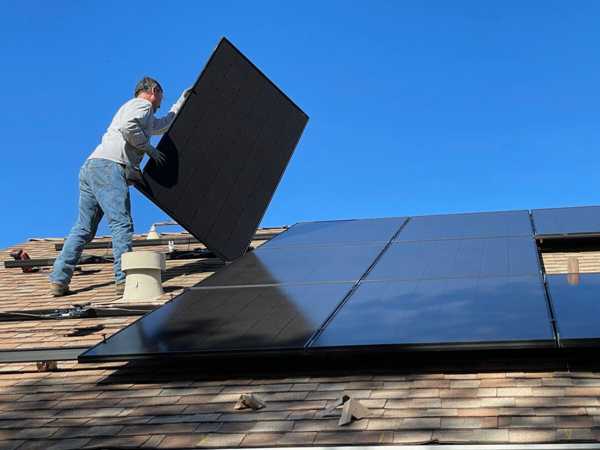
Mergulhe mais fundo: As chaves para a compatibilidade
Aqui está o que é necessário para fazer isso funcionar:
- Conexão em série de painéis: Para carregar uma bateria de 48V, seu painel solar precisa produzir uma tensão significativamente mais alta (normalmente 60 V ou mais). Um único "12V" painel geralmente tem uma tensão de alimentação máxima (Vmp) de cerca de 18V.
- Portanto, você precisa se conectar pelo menos quatro painéis idênticos de 12V em série (positivo para negativo) para atingir uma tensão de sistema adequada (4 painéis x ~18Vmp = ~72V).
- Um controlador de carga MPPT é essencial:
- Um PWM barato (Modulação por largura de pulso) controlador não pode ser usado. Requer que a tensão do painel esteja muito próxima da tensão da bateria.
- Um Controlador MPPT é um sofisticado conversor DC-DC. Ele pode suportar a alta tensão de seus painéis com fiação em série (Por exemplo, 72V) e eficientemente "reduzir" à tensão de carregamento correta para sua bateria de 48V, capturando a quantidade máxima de energia de seus painéis no processo.
- A abordagem profissional: Embora o uso de painéis de 12 V seja tecnicamente possível, projetos de sistemas modernos para baterias de 48 V geralmente usam painéis de alta tensão desde o início (Por exemplo, "24 V" painéis ou painéis residenciais padrão de 60/72 células com Vmp de 30-40V). Conectar apenas dois deles em série é mais simples e muitas vezes mais eficiente.
Isso destaca a importância do design do sistema. No GYCX Solar, garantimos que cada componente, dos painéis solares ao controlador de carga e ao 48V bateria de montagem em rack, é perfeitamente compatível para uma segurança ideal, desempenho, e eficiência.
Uma bateria de rack de servidor é a base da tecnologia moderna, armazenamento de energia escalável. Entendendo como configurar, cobrar, e dimensionar um sistema em torno de um 48Padrão V1 é a chave para desbloquear seus benefícios. Usando módulos de 48 V especialmente desenvolvidos, você simplifica a instalação e aumenta a segurança, criando uma base sólida para o seu independência energética2.
Se você tiver dúvidas sobre como projetar seu próprio sistema de energia de 48 V ou quiser saber mais sobre nossas soluções profissionais de baterias para montagem em rack, Nossa equipe especialista da GYCX Solar está pronta para ajudar. Entre em contato conosco para uma consulta!
Explorar este link aprofundará sua compreensão do papel do padrão 48V no armazenamento de energia, aumentando a eficiência do seu sistema. ↩
Este recurso fornecerá insights sobre como alcançar a independência energética, crucial para uma vida sustentável e para reduzir a dependência de fontes de energia tradicionais. ↩
